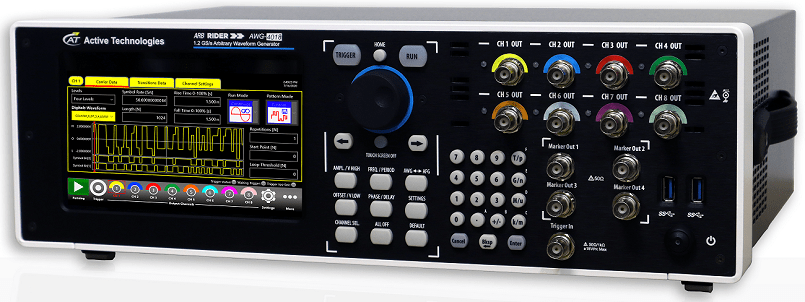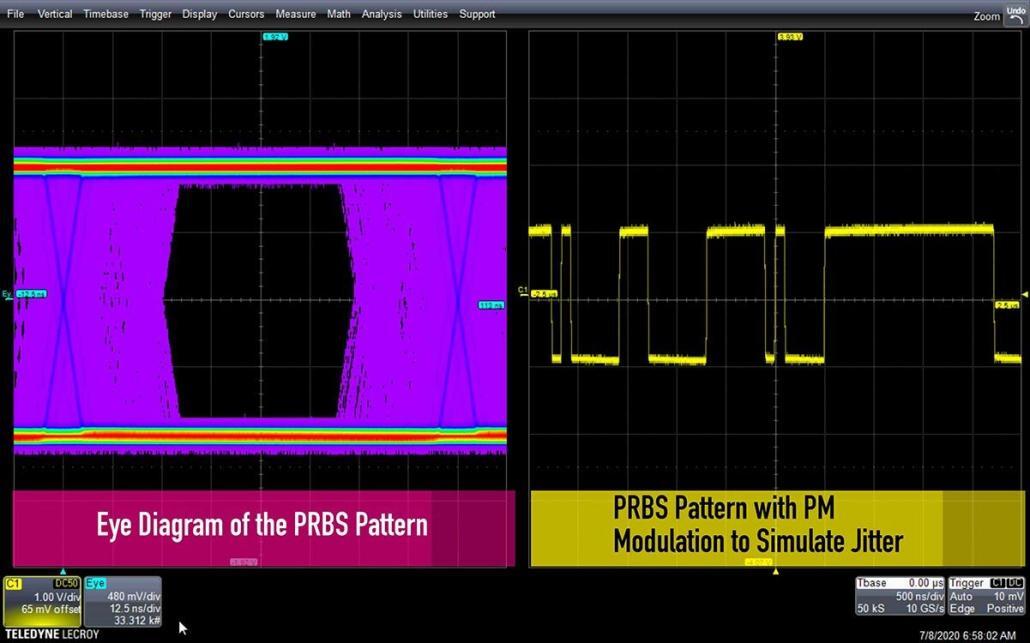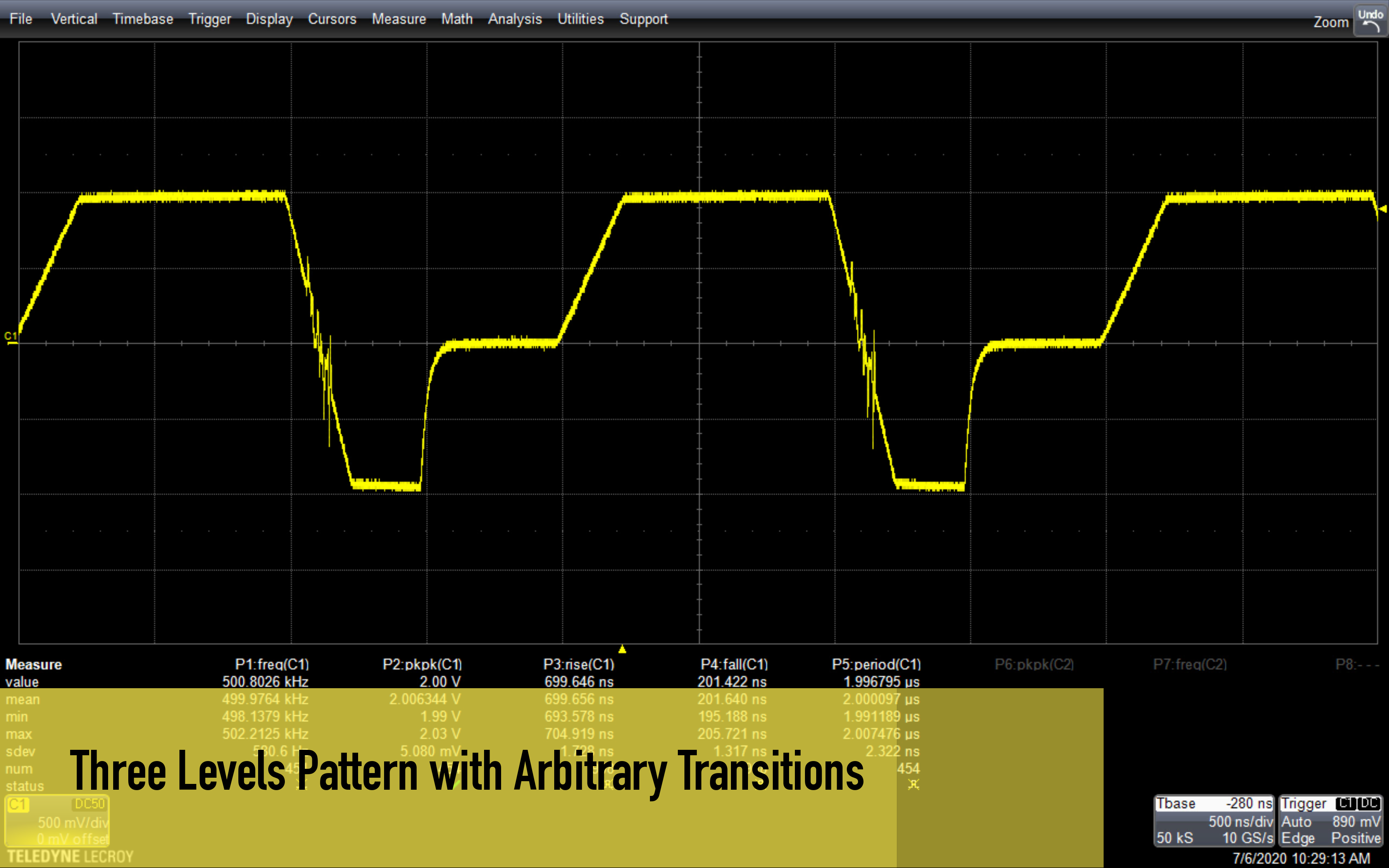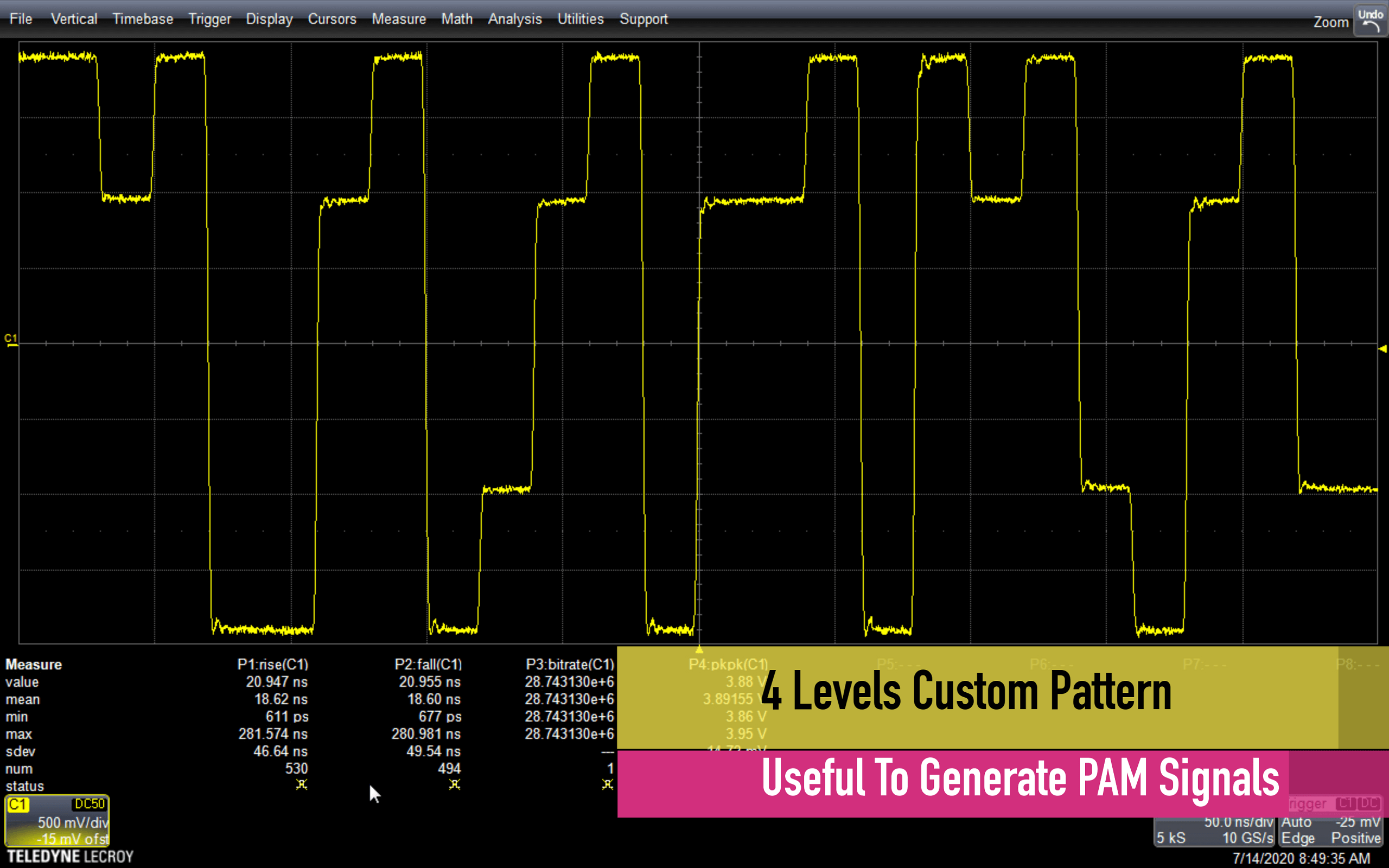up to 32 channel pulse pattern generators
The Pulse Pattern Generator family (PPG), also knows as Serial Data Pattern Generator (SPG), is designed to generate a stream of binary information.
The binary data is generated through the instrument analog outputs.
With up to 8 channels of data stream per instruments, built-in PRBS sequences, modulation features, transition shaping, and the flexibility of a powerful analog front-end, the PPG is the perfect tool for the most challenging applications, where the digital data should be modeled with analog characteristics to perform the parametric test of digital I/O.
The Pulse Pattern Generator is available as an option in the Arbitrary Waveform Generator AWG-4000 , AWG-5000 and AWG-7000 Series.
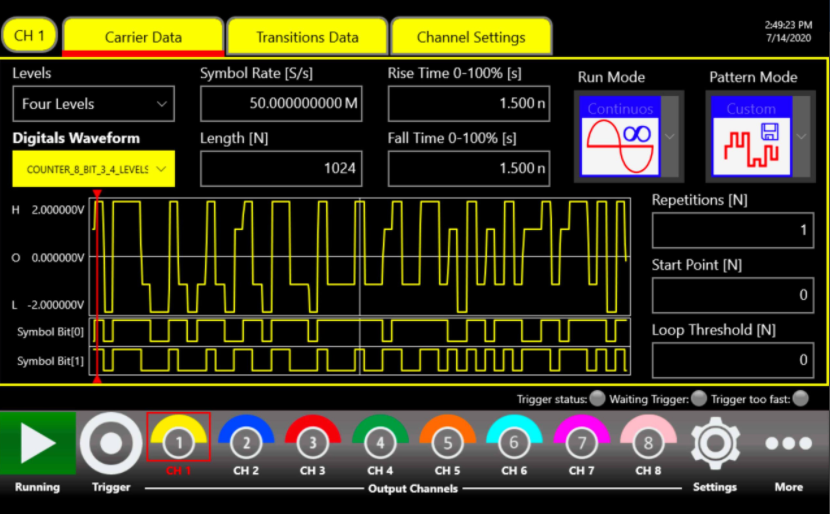
Pulse Pattern Generators – Key Features
- Generate a stream of binary information
- PRBS sequences, modulation features, transition shaping
- Semiconductor test, signal integrity testing, aerospace & defense, PAM signals emulation, advanced research
- Replace discontinued Keysight’s Pulse Pattern Generators
AWG-4000 – AWG-5000 – AWG-7000 Pulse Pattern Generators
For Chinese version click here
Applications
The Pulse Pattern Generators are widely used in many applications starting from semiconductor testing, aerospace & defense to signal integrity testing.
Semiconductor Test
The Pulse Pattern Generator represents a key tool for:
- Characterize and Test Digital Logic and Integrated Circuits
- Emulate serial protocol like I2C, SPI and High-Speed Serial Protocols
- Microprocessors and Memory Testing
- Multiple Clock Generation
- Image Sensor Testing
Signal Integrity Testing
The Pulse Pattern Generator ability to create modulated pulses allows the user to perform Jitter Stress tests and Noise Immunity tests.
Jitter emulation is commonly used for video signal testing and digital display driver circuit testing.
Signal Integrity Testing
The Pulse Pattern Generator ability to create modulated pulses allows the user to perform Jitter Stress tests and Noise Immunity tests.
Jitter emulation is commonly used for video signal testing and digital display driver circuit testing.
The Pulse Pattern Generator has also the ability to program arbitrary pattern transitions.
In this way, you can simulate distorted signals that can be used in signal integrity tests and crosstalk measurements
Aerospace & Defense
Pulse Pattern Generators are used in Radar Testing for Tower/Plane communication emulation: it’s possible to use the Serial Data Pattern Generator to create custom (coded encrypted) pulse patterns.
Moreover, Receiver and Radar designers have the need to create PRBS sequences to test the robustness of their systems: the Active Technologies Pulse Pattern Generators have a built-in PRBS pattern creation feature that allows engineers to select not only the order of the sequence but also the bit rate, the rise and fall time and the shape of the transitions.
PAM signals emulation
Particle Image Velocimetry testing, magneto-optical disc testing, system trigger source emulation, and multi-level PAM signals emulation are only a few of all the other possible applications of the Pulse Pattern Generator.
Extremely Easy To Use
Active Technologies Pulse Pattern Generators are equipped with an extremely easy to use interface that takes full advantage of a 7″ capacitive touch-screen display: tap, swipe and pinch to zoom gestures give you the possibility to control the instrument like a mobile phone or tablet.
All the instrument settings are just one touch away.
Replace Discontinued Pulse Pattern Generators
Keysight (former Agilent) 81110A PPG can be replaced
Recently the most important T&M manufactures have discontinued a wide set of data generators, instrument extremely useful for digital logic & ICs characterization, functional and debugging testing, radar and receiver applications, signal integrity experiments.
The following types of equipment from Keysight:
- 81110A 8110A 8112A 8130A 81130A 8131A 8133A 81180B 81101A 81104A
- VXI multi-channel system like Keysight E8311
can be replaced by Active Technologies Pulse Pattern Generators. In particular AWG-4000 series reach up to 12V (50Ω into 50 Ω) or 24V (5Ω onto 50Ω).
Arb Rider AWG-4000 - AWG-5000 - AWG-7000 Series
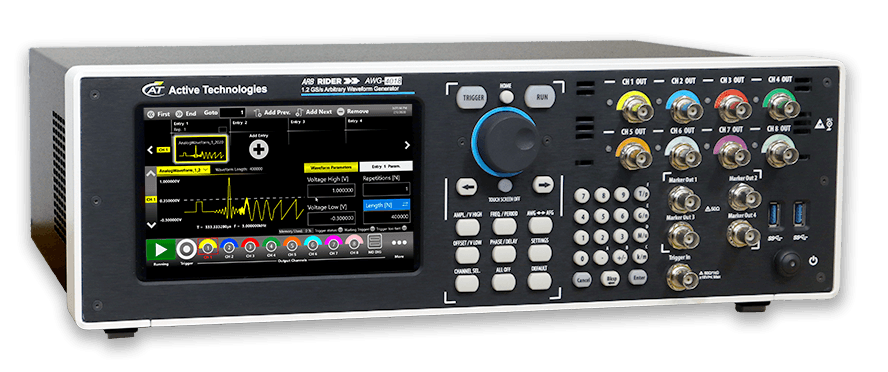
| MODEL | No. of CH | MAX. DATA RATE |
|---|---|---|
| AWG-7202 | 2 | 6.5 Gbit/s |
| AWG-7204 | 4 (16 combining 4 units) | 6.5 Gbit/s |
| AWG-7102 | 2 | 3.25 Gbit/s |
| AWG-7104 | 4 (16 combining 4 units) | 3.25 Gbit/s |
| AWG-5062 | 2 | 1.54 Gbit/s |
| AWG-5064 | 4 | 1.54 Gbit/s |
| AWG-5068 | 8 (32 combining 4 units) | 1.54 Gbit/s |
| AWG-4012 | 2 | 300 Mbit/s |
| AWG-4014 | 4 | 300 Mbit/s |
| AWG-4018 | 8 (32 combining 4 units) | 300 Mbit/s |
What does a pattern generator usually do?
Data Pattern Generators offer a complete and unique portfolio of instruments to address a wide range of applications starting from Digital Logic and Semiconductors characterization, Aerospace & Defense compliance testing, Mixed Signal Systems testing to Signal Integrity experiments. Active Technologies offers two different product families: Digital Pattern Generator (DPG) and Pulse Pattern Generator (PPG).
Which pattern is produced by generator?
The DPG generator allows you to create digital stimuli synchronous with analog channels to test and debug Mixed-Signal applications: they can be used for FPGA / peripheral / ASIC emulation and stimulation, protocol level testing setup/hold verification, production test, mixed signal testing and general digital stimulus. The Serial Data Pattern Generator family is designed to generate a stream of binary information. The binary data stream is generated through the front panel BNC/SMA connectors.
With up to 8 channels of data stream, built-in PRBS sequences, modulation features, transition shaping and the flexibility of a powerful analog front end, the Pulse Pattern Generator is the perfect tool to address the most challenging application where the digital data should be modelled with analog characteristics.
How do you use a pattern generator?
The DPG generates digital stimuli for the Device Under Test using a digital connector and a digital probe (LVDS or LVDS to LVTTL).
The PPG (Pulse Pattern Generator) generates the data stream through the front end BNC or SMA connectors.

